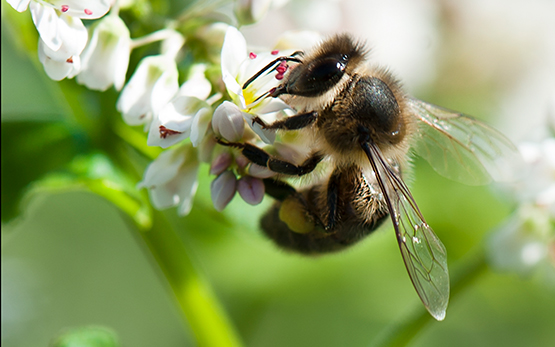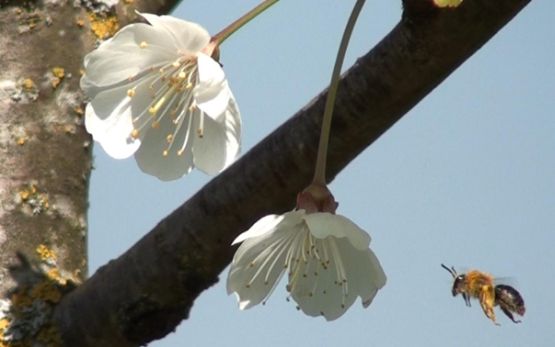No negative impact of pre-flowering application of the insecticide sulfoxaflor on Osmia bicornis was found. And fungicide azoxystrobin did not interact synergistically with sulfoxaflor.
Pesticide exposure is considered a major driver of pollinator decline. Impacts of new sulfoximine-based insecticides on solitary bees and their potential interactive effects with other commonly applied pesticides in agriculture have been tested in a semi-field experiment. The test organisms was the solitary mason bee species Osmia bicornis, an important pollinator of crops and wild plants in Europe. Agroscope showed that spray applications of the insecticide sulfoxaflor (product Closer) and the fungicide azoxystrobin (product Amistar), both alone and combined, had no significant negative impacts on adult female survival or the production of offspring or their survival, sex ratio or body size when sulfoxaflor was applied five days before crop flowering.

Publication
Contact
Further Information
Multimedia
Last modification 30.05.2022






